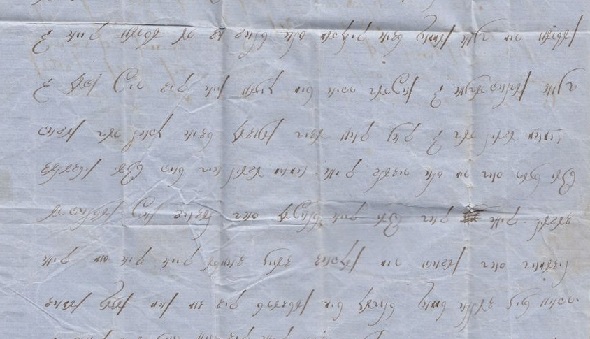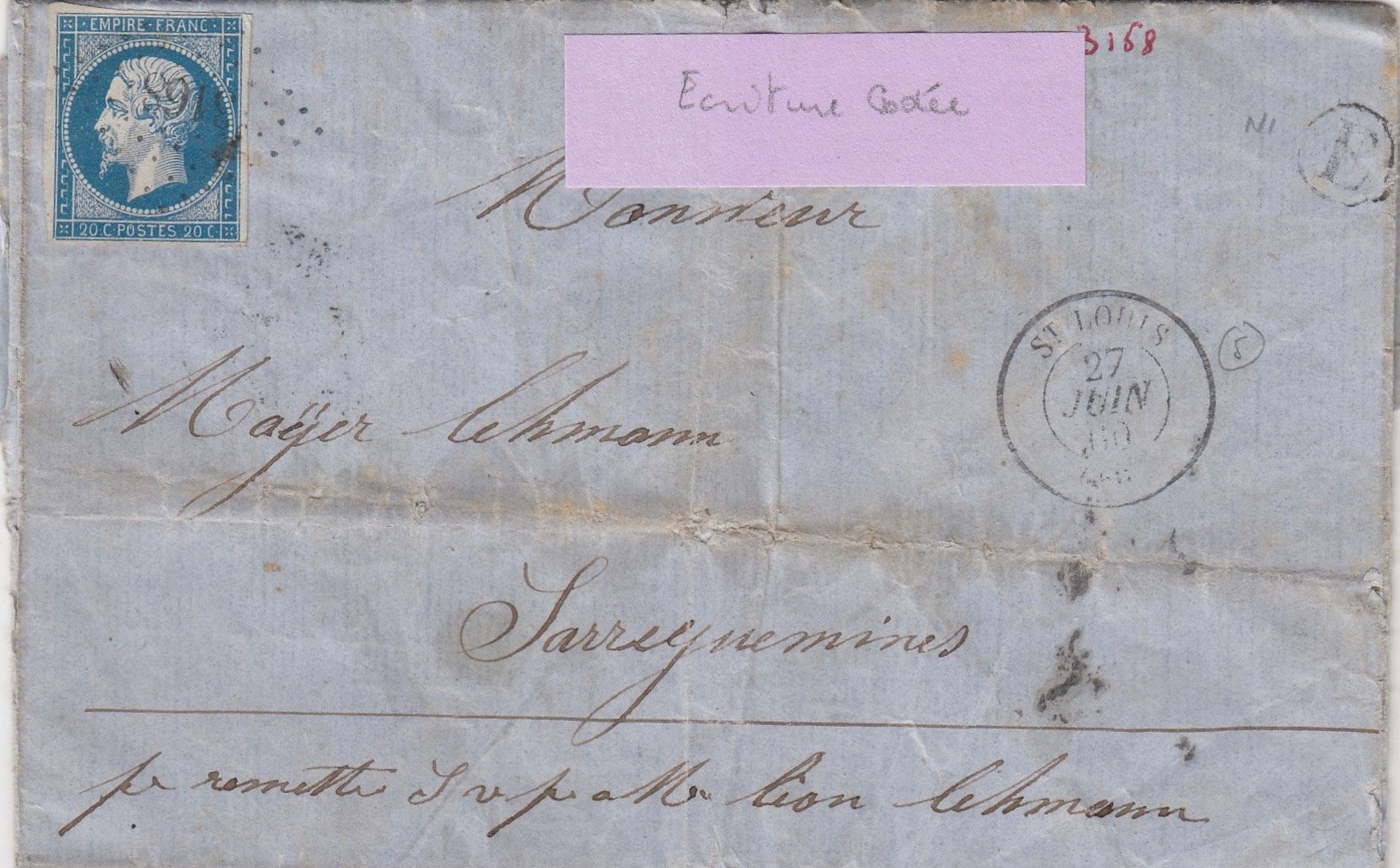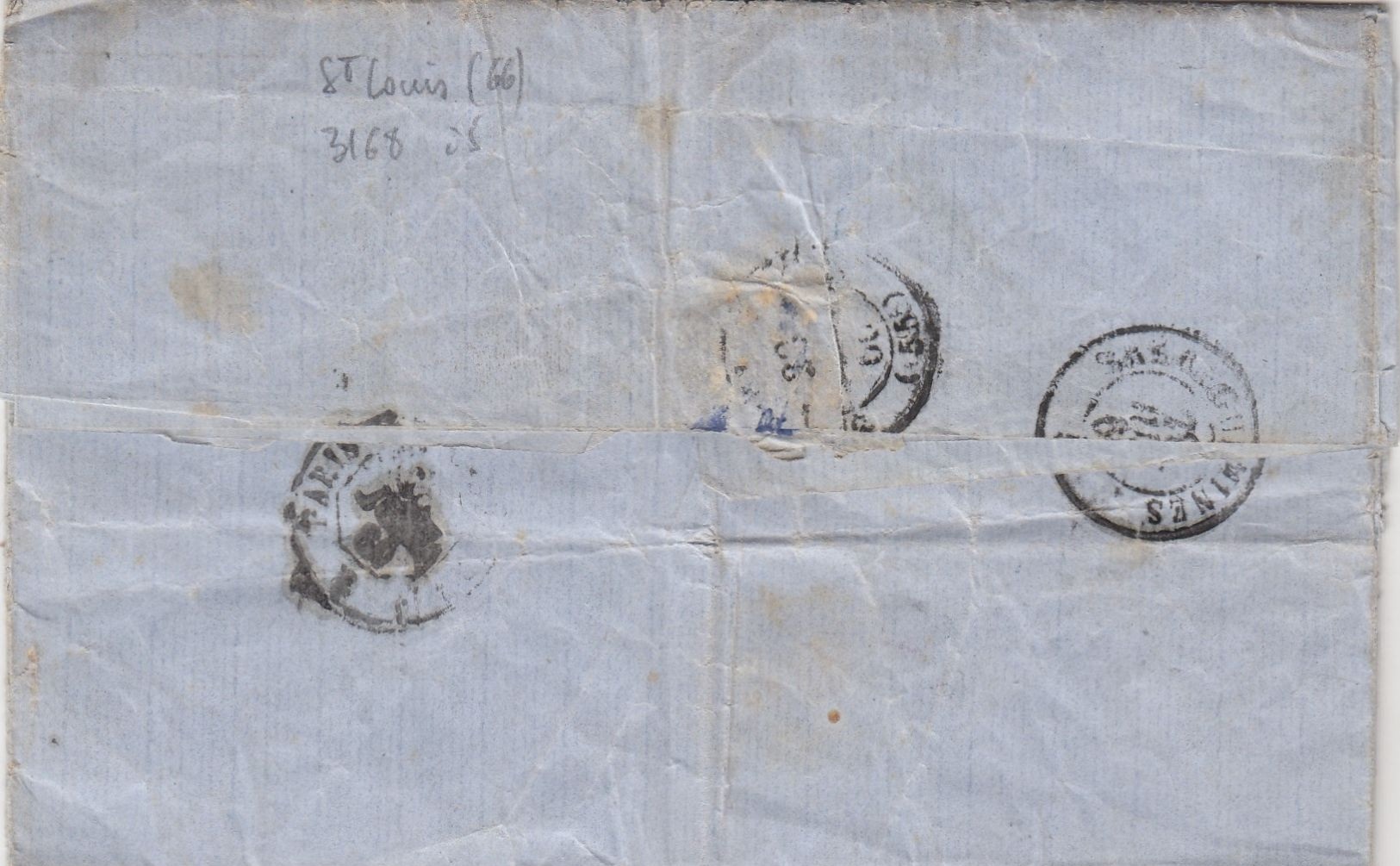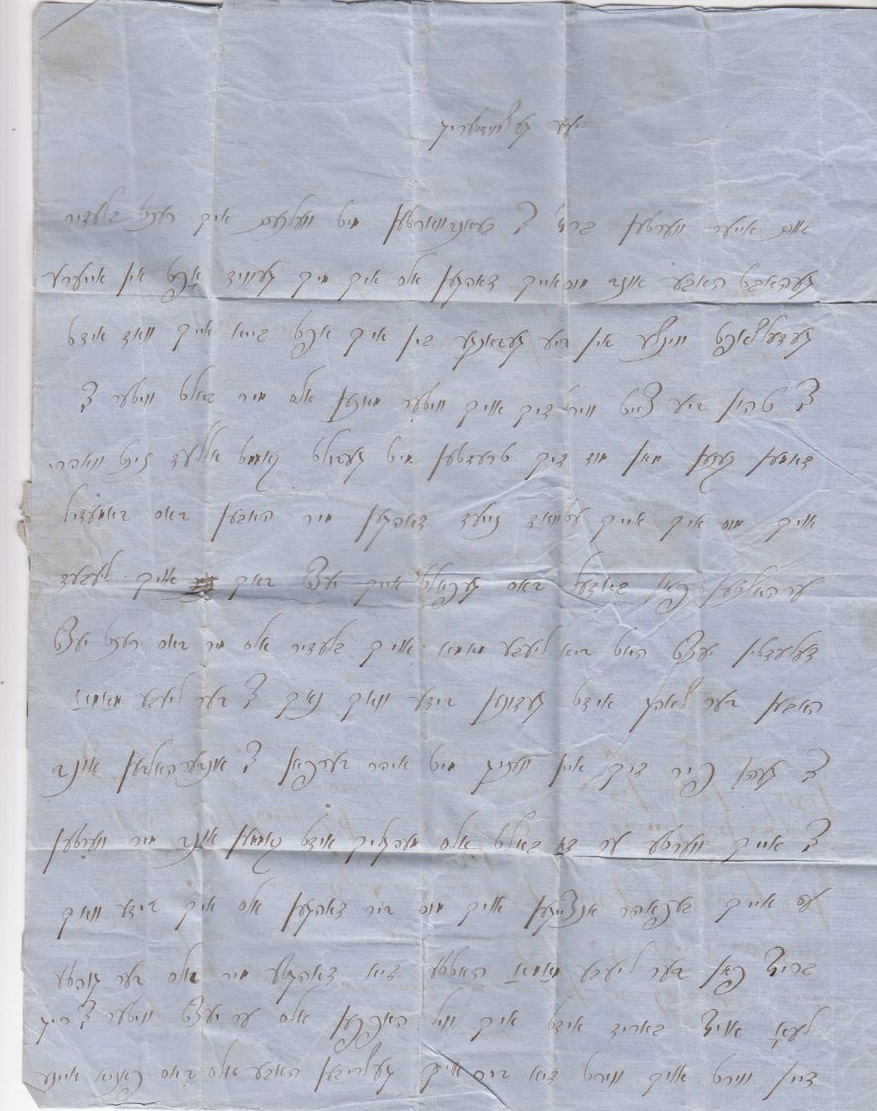Who can solve this coded letter from the 19th century?
In 1860, a Mr. Lehmann in Saargemünd received a coded letter. Can a reader decipher it?
Blog reader Alexandre from France provided me with an interesting crypto puzzle. To be able to say something about its origin, I had to take geography lessons once again. This time the virtual journey takes me to Saargemünd (also known as Sarreguemines), a small French town right on the border with the German state of Saarland.
The encrypted letter
Alexandre recently bought a coded letter at auction, of which he kindly provided me with scans. The following picture shows the front of the envelope:
As far as I can see, the letter was postmarked in St. Louis in 1860. This place name exists several times in France. The recipient is a Monsieur Mayer Lehmann in Saargemünd. If I understand the sentence below correctly (“se remette s’il vous plaît à M. Lion Lehmann), the letter is to be forwarded to a Lion Lehmann. This could be the son of the recipient. Details such as street or house number were apparently not yet needed in 1860 to address a person in Saargemünd.
Unfortunately, the back of the envelope does not give much:
The letter includes two pages. Here is the first:
Hier ist die zweite Seite:
The writing seems quite fluid for a cipher. The scribe or scribes must have been skilled at it. I wondered at first if there was any ciphering here at all, or if the text was merely written in an uncommon script. However, no script I know looks like that. So, for the time being, I assume that there is an encoding.
The letter consists of two parts signed by different persons. One person was a Caroline Brunselweg, the other a man named Jacques. It is not entirely clear to me how these two authors are to be interpreted. Perhaps Caroline and Jacques sent their communications together to save money.
Transcription
Alexandre has kindly provided me with a transcription of Caroline’s text:
ABCDEF GHDA IBLN KDHEDLL GBJ MDGALNLLFHLNDF O PAF MDGADLL ADBBEB KLLN
DADBBLN MBLN GQLN CBLLDR IBJ IBLN SELN MDRALNC IBBLNSLL FHLLN DFLNT GFENTDR
GCBLN CLNLL IBBLN LNBBF GQLN IBLN MBF DRHLNFDR DBF MBLN DUHBLL GQLNUEDCDR
O NDGBLL GELNF ABJ SELN MDHLNJ ADGBLL IBLLN IBC ABLL GBBO DBF MLVG O
BAVLBLL GHBH CDEELN GJLNW GEBCDR GBJ MDGCDNG IBC BLL MLNJ MDHDW MDBLNC
EBCDJLNF SLNF MDFLNV ABJ MDRVLNF FDBBH FLNLLGD IBBLN IBLN SBJ IBLLN
CDFDE IBLLN ILNF ILNF GXDB IBBLN GELLQDR SLNF EDCLNF MLNQ MDGELNVAD
GXDB GHDA SLNF ABJ SELN ABCDEF IBLLN LBJLBJ DFDBE LNBF GLBA GXDN MBGCDEDC
???? DFDBE ADF O ILNH ILNJ DCBF MDHLCDR GCALN RVLNU ADF MDFLV
FHLLN MDFELNVADFHLLN O MLBQADF AVBLN GBJ RBHDLL MBBLN IBC ABQ MVDR O
ILNLL DCBF IBLN SELL MDRVLNC ABF SLL IBLLN MDRBBXHLN AVLNQDF IBBLN SD
DGVLR ADF SELN ABJ DGRVLNF LNBC DGGLLV ???? DADBE ADF MBBQ ZBAF
RBA O ADGBLL GXDB AD SELN MDQQLNV EBLL IBLN GCBLN CBALNF ZBLLN LNDE
DHBBLN LSHLNQ SLBF SELN DFLNV MDFAUDR IBLL ABF LNBC GABLL IBLLN GABLL MBBC
GLNV CD MBGCDEDC CGFDBE DERHDB DADEBLLDR SDF GBJ GCBLN LNELNW
GCLNV DGADLLLR DH??E LNF LNLF SELN GALNLDR ABCDEF GHDA CBLLDR ABJ
MBBLN IBLLN EBBC MBLN GRLNC LNBALNJ ADCHLLN SELN MDRALNC IBBLN SLJ IBLLN
EDRHLLN ADF MLN FHLLN MDBBAU MBGCDEDC DFHLLF LNBF MLN HSBLN MLNQ SLAR
ADJBLN AVBLN SJ IBB MDJJLNW IBBLN O MADR IBLLN CBLLDR DGDG LNBC
SELN IBLN DQQBV IBLN MVDR IBBLN O GELLF GQABF LNBC MDHDAFUADQ
DADBBLN MBF DRHLNFDR DCF MBLN DGADLL MDFBBAU ADGBLL GELLF SHLLN AVBLN
ADGCDLL DBBAGDR
The text is probably written in French. The expression “la même” appears in it in plain text. The “I” transcribed as O probably marks the end of a sentence. Some single symbols may stand for pairs of letters. For example, Alexandre used LN and LL for the transcription.
Based on these hypotheses, Alexandre refined his transcription:
ABCDEF GHDA IBO GBJ MDGAOYFHODF PAF MDGADY ADBBEB KLO
DADBBO MBO GQO CBYDR IBJ IBO SEO MDRAOC IBBOSY FHLO DFOT GFENTDR
GCBO COY IBBO OBBF GQO IBO MBF DRHOFDR DBF MBO DUHBY GQOUEDCDR
NDGBY GEOF ABJ SEO MDHOJ ADGBY IBLO IBC ABY GBB DBF MLVG
BAVLBY GHBH CDEEO GJOW GEBCDR GBJ MDGCDNG IBC BY MOJ MDHDW MDBOC
EBCDJOF SOF MDFOV ABJ MDRVOF FDBBH FOYGD IBBO IBO SBJ IBLO
CDFDE IBLO IOF IOF GXDB IBBO GEYQDR SOF EDCOF MOQ MDGEOVAD
GXDB GHDA SOF ABJ SEO ABCDEF IBLO LBJLBJ DFDBE OBF GLBA GXDN MBGCDEDC
DFDBE ADF IOH IOJ DCBF MDHLCDR GCAO RVOU ADF MDFLV
FHLO MDFEOVADFHLO MLBQADF AVBO GBJ RBHDY MBBO IBC ABQ MVDR
IOY DCBF IBO SEY MDRVOC ABF SY IBLO MDRBBXHO AVOQDF IBBO SD
DGVLR ADF SEO ABJ DGRVOF OBC DGGYV DADBE ADF MBBQ ZBAF
RBA ADGBY GXDB AD SEO MDQQOV EBY IBO GCBO CBAOF ZBLO ODE
DHBBO LSHOQ SLBF SEO DFOV MDFAUDR IBY ABF OBC GABY IBLO GABY MBBC
GOV CD MBGCDEDC CGFDBE DERHDB DADEBYDR SDF GBJ GCBO OEOW
GCOV DGADYLR OF OLF SEO GAOLDR ABCDEF GHDA CBYDR ABJ
MBBO IBLO EBBC MBO GROC OBAOJ ADCHLO SEO MDRAOC IBBO SLJ IBLO
EDRHLO ADF MO FHLO MDBBAU MBGCDEDC DFHYF OBF MO HSBO MOQ SLAR
ADJBO AVBO SJ IBB MDJJOW IBBO MADR IBLO CBYDR DGDG OBC
SEO IBO DQQBV IBO MVDR IBBO GEYF GQABF OBC MDHDAFUADQ
DADBBO MBF DRHOFDR DCF MBO DGADY MDFBBAU ADGBY GEYF SHLO AVBO
ADGCDY DBBAGDR
I do not yet have a transcription for the text of Jacques’ letter.
Possible solutions
The time of origin and the persons involved (they seem to be private persons) suggest that no particularly sophisticated encryption method has been used here. The most likely solution is a simple letter substitution (MASC), possibly with some additions, like a special symbol for the end of the sentence.
It is unusual that no two-letter words appear in the transcribed text, although they are very common in French (LE, LA, UN, …). Is it perhaps a different language after all?
Can any reader say more about this unusual letter? Alexandre and I look forward to interesting comments.
If you want to add a comment, you need to add it to the German version here.
Follow @KlausSchmeh
Further reading: Alice, Berthe, Denise, Georgette: Eine rätselhafte Postkarte aus dem Jahr 1914
Linkedin: https://www.linkedin.com/groups/13501820
Facebook: https://www.facebook.com/groups/763282653806483/







Letzte Kommentare